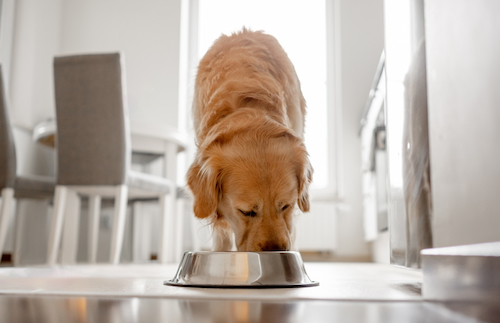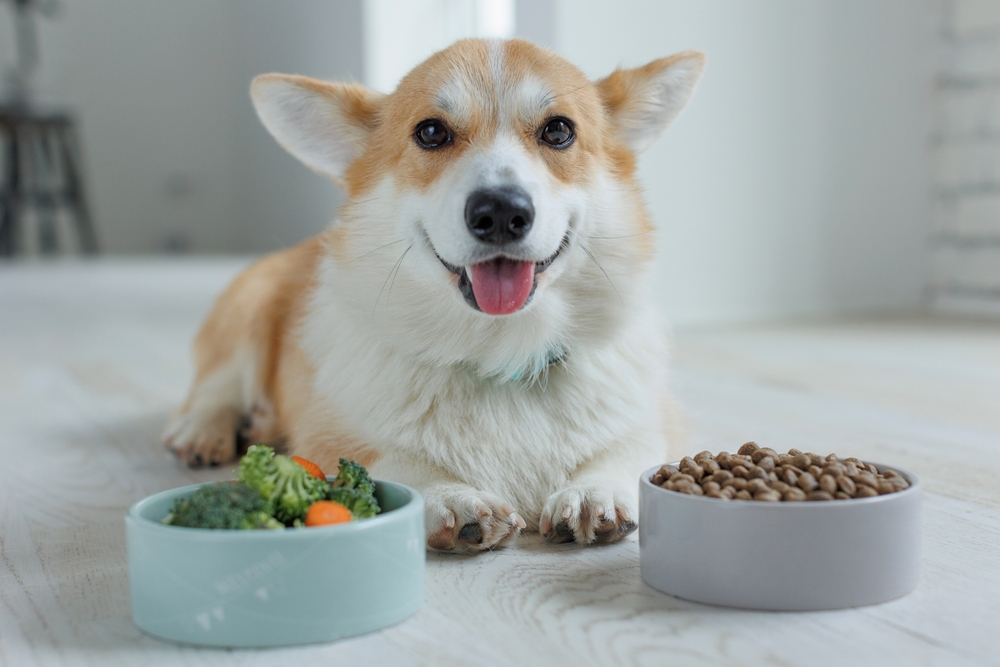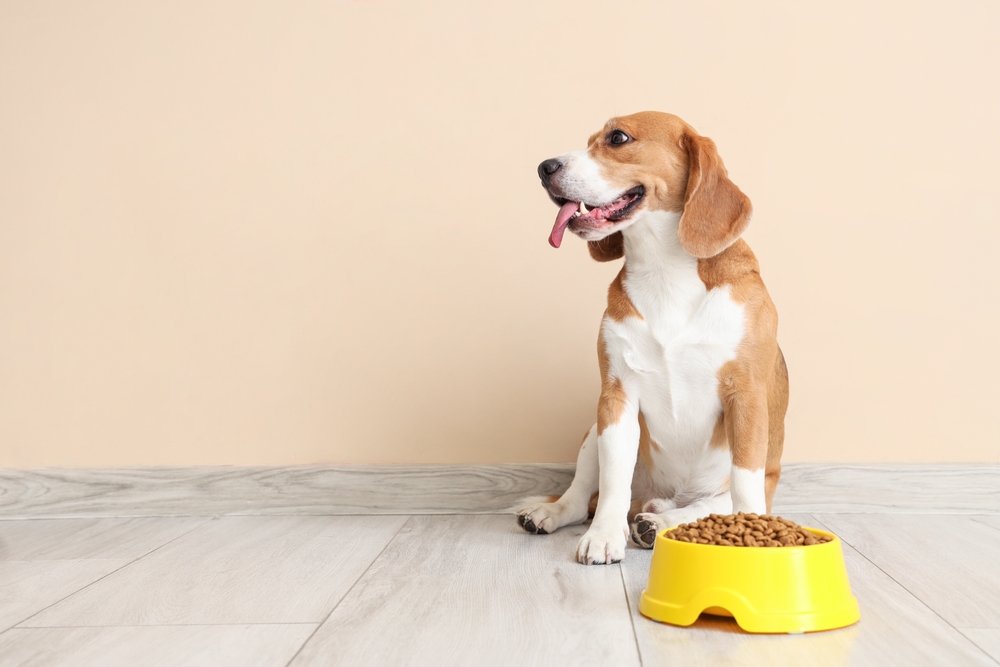5 Benefits of High Protein Dog Food
by Nicole Pajer
Updated on May 06, 2024
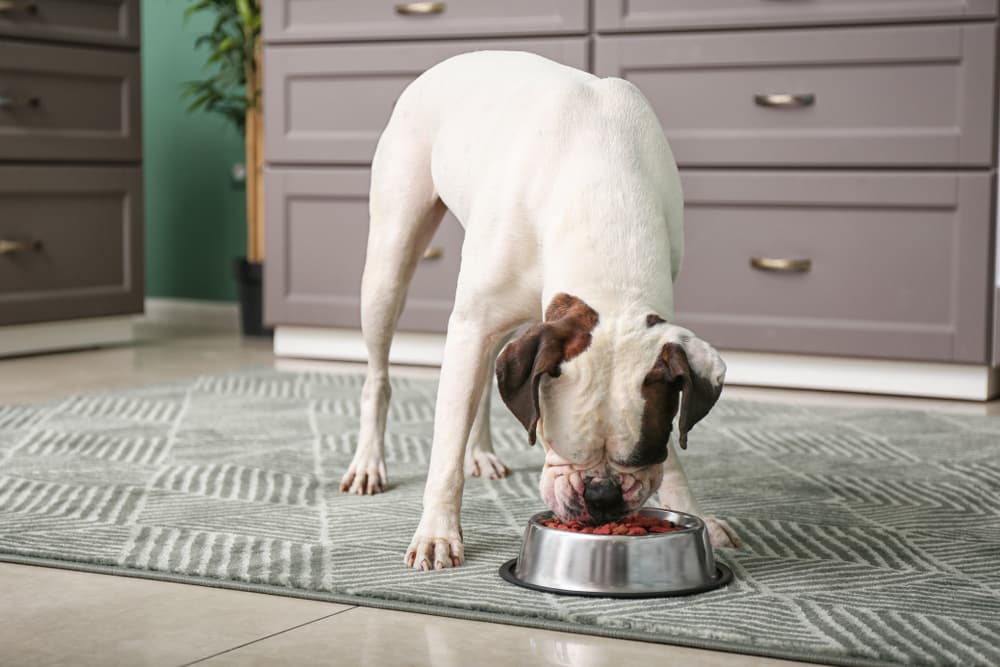
All featured products are chosen at the discretion of the Vetstreet editorial team and do not reflect a direct endorsement by the author. However, Vetstreet may make a small affiliate commission if you click through and make a purchase.
Even if decoding dog food labels often leaves you scratching your head, most pet parents know one general rule by heart: A high quality source of protein should always be the very first ingredient listed on the label. That’s because protein plays such a pivotal role in helping dogs thrive. And high-protein dog foods, like Purina ONE True Instinct High Protein formula, offer pet parents an easy and effective way to unlock the many benefits protein provides our pups.
Here, we’ll explore the benefits of high protein dog food and talk to some veterinary experts to find out how to tell if a high-protein formula is right for your dog.
What is High Protein Dog Food?
When it comes to protein for dogs, most dogs need between 1 and 2 grams of protein per pound of body weight per day, says Dr. Mike Greenberg, DVM, veterinary advisor with GoDog pet hospitality and cofounder of the Veterinary Care Accessibility Project.
Dog food intended for adult maintenance must contain at least 18 percent crude protein content to meet the Association of American Feed Control Officials (AAFCO) minimum nutritional standards. And the majority contain between 18 to 22 percent protein to support the need of most dogs.
“But protein requirements can vary widely from dog to dog, depending on their age, breed size, and activity level,” Greenberg adds. Puppies need even more protein, about 2.5 to 3 grams per pound of body weight, to support growth and development, he says. Female dogs who are pregnant or nursing and large, very active dogs tend to benefit from higher protein content, too.
A high protein dog food typically contains protein levels significantly greater than the minimum requirements. These will vary according to manufacturer and type of dog food (wet or dry). In general, dog food with protein content ranging between 22 to 29 percent is considered moderately high protein. Dog food with protein content of 30 percent or greater is considered high protein.
One such example, Purina ONE True Instinct High Protein dry dog food, is packed with 32 percent protein from high-quality sources, including beef and salmon.
5 Benefits of High Protein Dog Food
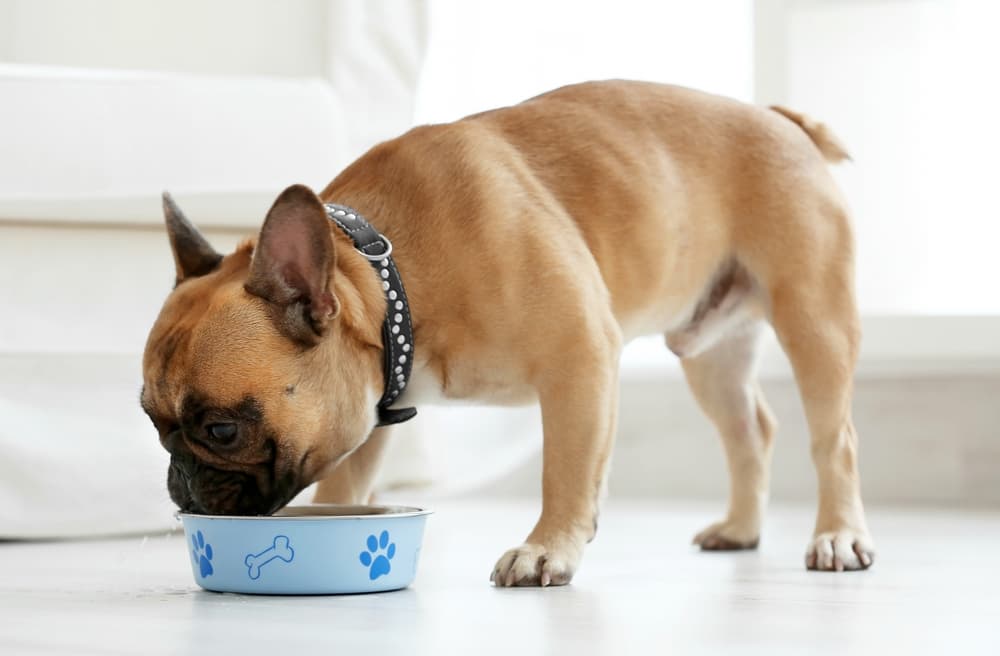
If high protein dog food is appropriate for your dog’s stage of life, breed size, body condition, or activity level, high-protein formulas, such as Purina ONE +Plus High Protein Puppy Food or Purina ONE True Instinct High Protein Dog Food, offer many benefits.
We talked to Dr. Sara Ochoa, DVM, a veterinarian with the Animal Hospital of West Monroe in Louisiana, who explains the top five ways high protein dog food can benefit your pup.
Builds muscles: “Protein supports muscle growth and maintenance, keeping your dog strong and active,” explains Dr. Ochoa. A high protein diet is especially critical for puppies who must build muscles rapidly to keep up with their growing bodies.
Provides energy: Adequate protein intake, adds Ochoa, also helps provide the energy needed for daily activities and exercise. Because very active breeds burn more energy, they need a high protein diet to help keep them properly fueled.
Weight management: Research shows that high protein diets can help dogs maintain a healthy weight by promoting fat loss without losing lean muscle mass. While a fiber-rich, high protein diet has been proven effective for weight loss in dogs, protein-rich diets also help dogs burn more calories after eating.
Healthy skin and coat: Guess what your dog’s fur is made of? Protein! And beneath that coat is skin tissue that’s primarily composed of protein and fats. High protein dog food fortifies your dog’s skin and coat to help prevent dry, brittle hair and dry, itchy skin.
Strengthens immune system: “Protein is vital for the development and maintenance of a robust immune system, helping your dog fight off infections and diseases,” Ochoa explains. In senior dogs, this is especially important, since some dogs have difficulty metabolizing immune-boosting nutrients as they age.
Is a High Protein Diet Right for Your Dog?
While there’s no doubt about the importance of protein in a dog’s diet, a high protein diet may not be the right choice for all dogs. In fact, it can be downright harmful for some dogs, who may experience side effects like gastrointestinal upset or allergic reactions.
“Dogs with certain medical conditions, such as kidney disease or urinary issues, may require a restricted protein diet,” warns Ochoa. Excessive protein intake can strain the kidneys in dogs with pre-existing renal issues and can exacerbate liver disease.
According to Greenberg, high protein diets are more likely to benefit certain types of dogs, including:
- Overweight dogs: Dogs who are overweight may benefit from a high protein dog food that is lower in calories and higher in fiber. Such diets, says Greenberg, can aid in weight loss while ensuring your pup gets the nutrients they need, despite the calorie reduction.
- Senior dogs: As dogs age, they tend to lose muscle mass. A high protein diet can help older dogs maintain their muscles, so they can stay active into their golden years.
- Working dogs and athletes: Dogs who are actively working and/or performing at a high level of athleticism often require higher levels of protein. Greenberg notes that this is not to say that breeds considered to be working breeds necessarily need higher protein dog food, but rather dogs who are actually working may benefit from such foods.
- Puppies: Puppies require higher levels of protein on a per-pound-of-body-weight basis, so puppy foods like Purina ONE +Plus High Protein Puppy Food are formulated with these needs in mind.
- Dogs who are pregnant or lactating: Pregnant and lactating dogs have extreme metabolic demands placed on their bodies and require higher levels of protein to maintain their body mass as well as that of their puppies.
It’s important to remember that all dogs are different, as are their protein needs. And even if your dog could benefit from a high protein dog food, protein requirements can change rapidly, especially among puppies. That’s why it’s so important to consult with your veterinarian to determine the appropriate protein level and diet for your dog’s specific needs.
High Protein Dog Food: What to Look For
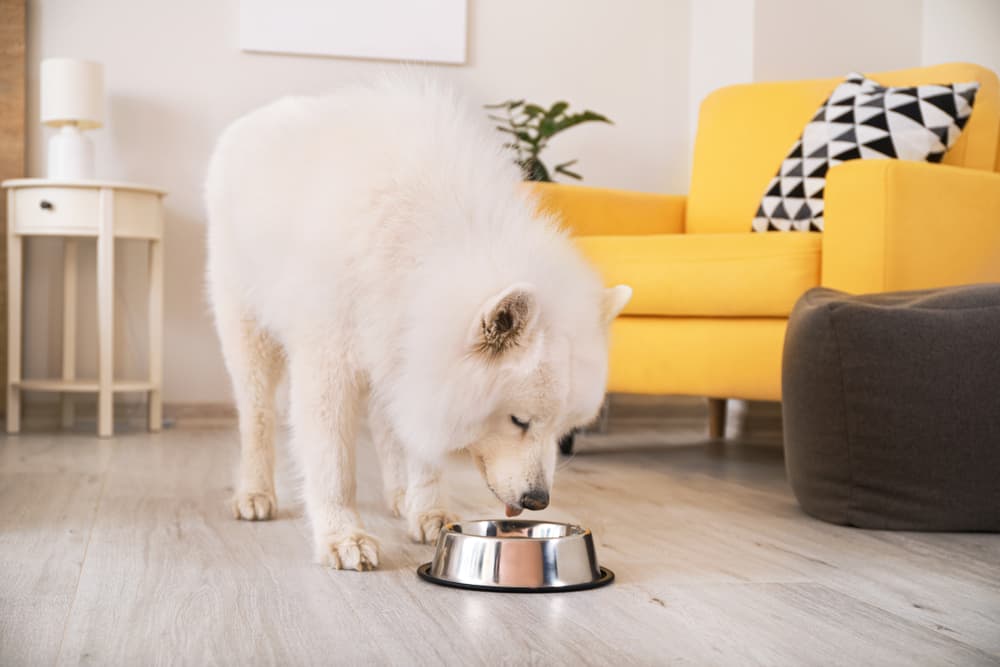
When shopping for high protein dog food, here are some things pet parents should consider:
- The first ingredient should be a named animal protein, such as chicken, beef, or fish, rather than a generalized protein source, such as “chicken byproduct meal.”
- “Look for reputable brands with statements from reputable organizations, like AAFCO, on the label,” says Greenberg.
- Choose a brand that is recommended by veterinarians, such as veterinarian-recommended Purina ONE, which is developed by nutritionists, behaviorists, and pet food scientists.
- Additional beneficial nutrients are always a plus, such as omega-3 and omega-6 fatty acids, vitamins, and minerals.
- “Consider foods that have undergone third-party testing for quality, safety, and appropriate labeling,” adds Ochoa.
- Look for high protein formulas developed specifically for your dog’s breed size, as different dog breed sizes have varying nutritional requirements. “Large breed dogs may require specific formulations that cater to their unique needs, such as controlled mineral levels for optimal bone health,” says Ochoa.
- You’ll also want to check out a brand’s reviews and reputation. Read reviews from other pet owners to see what they liked and didn’t like about a certain food.
- And always run your decision by your veterinarian to get their official okay.
High-Protein Dog Foods: Tips for Success
When switching your dog to a high protein dog food, Ochoa recommends introducing the new high protein pet food gradually to avoid any digestive upset. Start by mixing a small amount of the new food with your dog’s current diet, increasing the proportion gradually over 7-10 days.
Purina ONE recommends the following schedule:
- Days 1 to 2: Feed 3/4 of the normal amount of current food and add 1/4 of the new food.
- Days 3 to 4: Serve half the current food and half the new food.
- Days 5 to 7: Feed 3/4 of the new food and 1/4 the previous food.
- Days 8 to 10: Serve only the new food.
A slow transition, Ochoa says, will allow your dog’s digestive system to adapt smoothly to the new protein-rich diet.
You’ll also want to regularly monitor your dog’s body weight during the transition period and beyond. “High protein pet food can help promote lean muscle development. But it’s important to ensure your dog maintains a healthy weight,” says Ochoa. Adjust the portion size accordingly and consult your veterinarian to prevent under or overfeeding.
She also notes that hydration is key. “Ensure that fresh and clean water is always available for your dog,” Ochoa explains. “Proper hydration aids digestion and overall health.”
Each dog is unique, and Ochoa emphasizes that it may take time for your dog to adjust to the new diet. During this period of transition, be patient and closely observe any changes in their behavior, stool consistency, or energy levels. If you notice any abnormal reactions, consult your veterinarian promptly.
All featured products are chosen at the discretion of the author. However, Vetstreet may make a small affiliate commission if you click through and make a purchase.

